A good salesperson can sell hay to a farmer or sand at the beach. But good salespeople aren’t born overnight. They’re built up through years of experience and hard work.
So, how do you help turn an okay salesperson into a great one? It starts with feedback. Mentorship, coaching, and performance tracking all play a role in helping reps grow and succeed. That’s where a strong sales performance management (SPM) plan comes in, giving your team the structure they need to develop their skills and hit their goals.
Read on to discover what sales performance management is, why it matters, how to implement it effectively, and how monday CRM can help you streamline the process.
Try monday CRMWhat is sales performance management?
Sales performance management (SPM) is a framework for measuring the success of a sales team with the objective of improving performance. SPM involves setting sales goals and objectives, designing and implementing sales processes, providing sales training and development, and using sales performance data to drive continuous improvement.
Sales performance management looks at both individual sales representatives and the entire team to see where operations can be made more efficient. It’s not only about setting KPIs or offering incentives, but rather guiding sales teams and empowering both reps and managers to become sales leaders.
An SPM framework will analyze data taken from sales performance metrics, such as closed sales, converted leads, or lost leads and sales, to train and upskill a sales team. The process also looks at quota management, forecasting, and pipeline management to set new goals for teams and employees. SPM involves a cycle of feedback between senior sales leaders or managers and newer sales employees and often relies on software to collect performance data and turn it into an action plan.
What makes sales performance management important?
A sales performance management framework is the backbone of your sales strategy. While your organization sets business goals and builds strategies to close more deals, implementing an SPM plan is one of the key ways to make sure your team reaches its revenue target.
Sales performance management has one clear goal: productivity through efficiency.
By gaining visibility into sales rep performance, managers and sales leaders can get a better picture of what’s working and what needs to be fixed in their sales strategies. This may include setting different targets, identifying trends across sales representatives, scaling resources where necessary, and adopting sales automation software to support sales staff.
For teams that are made up of multiple reps at different levels of experience and skill, SPM can also help bridge the gap between lower-performing agents and your top sellers. The SPM process will offer insights into skills that may be lacking in certain team members so that you can more accurately tailor training plans and improve operational efficiency.
Core components of sales performance management
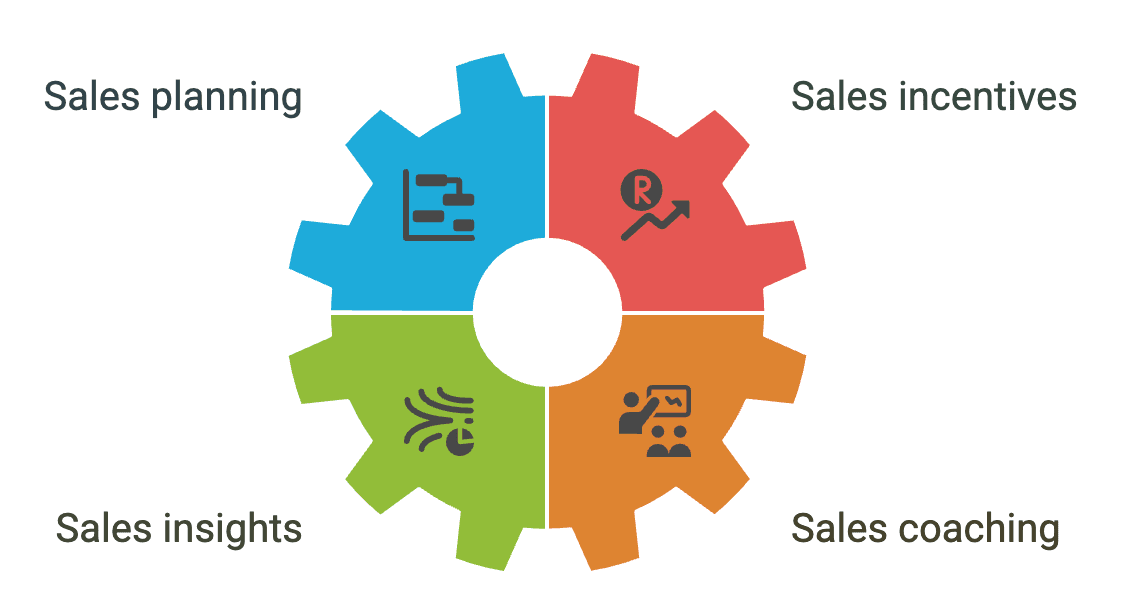
The components that make up a sales performance management plan depend on each individual business. Every team might want to track and reward progress in a unique way. However, there are some key components of a sales performance management plan that, no matter what your goals, will lead you to success.
Sales planning
Every sales performance management cycle should start with a sales plan. A sales plan outlines objectives, milestones, and company goals so that your entire sales team is on the same page. It also includes other essential information to guide your sales reps, such as:
- Territory management and assignment so each rep is allocated a territory to focus on
- Customer segments so that each account is categorized
- Quota setting to define sales targets by month, quarter, or year
- Capacity planning so that it’s clear how many salespeople are needed in each territory and team
Effective sales planning also includes identifying and outlining potential risks and obstacles so that every sales agent is aware of what to look out for. Additionally, in the sales planning stage, you’ll want to align your organization’s objectives with new tasks, such as teaching sales reps how to generate new leads if your company’s goal is to expand its customer base.
Sales incentives
After mapping out where your reps are going to sell, it’s time to define how they’ll sell. Incentive compensation management, such as commission structures, bonuses, and rewards, is standard in sales teams and encourages reps to meet and even exceed their quotas.
However, to be really motivating, sales incentives need to be clearly stated and attainable. They should also be flexible structures that reflect realistic sales targets and can change as market conditions, company resources, competitor offerings, or goals evolve. Overall, the goal of sales incentives is a win-win: when sales professionals make the most of commission structures to maximize their income, companies are also increasing their profits.
Sales insights
Once plans are set and you have a good incentive structure, the next step is to determine how you’ll measure the effectiveness of your sales team. This includes choosing specific metrics and key performance indicators (KPIs) to monitor to track performance and see if anything needs to be updated or reviewed regularly.
Some important KPIs to monitor include:
- Pipeline management
- Sales forecasting
- Pricing and discounts
- Quota attainment
- Sales velocity
In the sales insights stage, the software you use becomes vital. Although sales software can still come in handy during the planning stage, AI-powered platforms can help managers closely track performance and get meaningful insights into sales data. With a customer relationship management (CRM) solution like monday CRM, managers can closely monitor sales forecasts, sales targets, and more in real-time thanks to built-in AI and automation tools that deliver accurate reports, suggestions for improvements, and notifications of potential risks.
Try monday CRMSales coaching
Based on the data collected from the KPIs and metrics you track, you’ll want to implement some sort of coaching plan. The purpose of sales performance management isn’t solely to track performance, but to enhance it.
According to a survey by PwC, only 46% of workers feel their employers give them opportunities to learn new skills to advance their careers. Implementing sales coaching at regular intervals is essential for both workforce upskilling and employee satisfaction. Sales coaching is the result of planning, incentives, and insights, and acts as the last piece of the puzzle that ties all components of SPMs together. A strong training program ensures your sales plans are executed correctly, gives sales reps the skills they need to reach incentives, and motivates them to meet KPIs.
How can sales performance management benefit your business?
There’s ample evidence to suggest that sales teams that apply SPM methods see greater success. According to McKinsey, companies that focus on performance management are 4.2 times more likely to outperform competitors and see a 30% higher revenue growth. Sales management software helps teams perform SPM cycles, making it an essential tool with high return on investment (ROI).
That said, sales performance management not only benefits your business financially but can be advantageous in a number of other ways.
Reduce sales rep turnover rates
High turnover leads to increased costs, as spending more time and resources training new hires adds up. A good sales performance management system promotes many important factors that can lead to higher job satisfaction and, in turn, lower turnover.
For example, many sales performance management systems emphasize clarity of expectations, constant feedback, and regular coaching, all while providing employees with the tools and resources they need to be successful.
Improve sales target accuracy
Tracking and monitoring sales productivity, performance goals, and objectives help businesses identify areas needing improvement. Furthermore, SPM can also help establish and monitor quotas by providing data-driven insights into how sales reps are performing, allowing managers to set and adjust quotas. The process is also great for identifying the most and least productive sales territories and allocating resources accordingly.
Forecast future sales trends
SPM leads to an abundance of new data, which teams can take advantage of. Data acquired through SPM and paired with CRM automation and AI features can predict sales trends by analyzing past sales data and using that information to forecast future sales. This can help businesses make more informed decisions about pricing, inventory, and marketing.
Additionally, SPM can help identify budgeting trends by forecasting sales, which is especially useful for projecting commission payouts. For example, let’s say a company wants to plan staffing and budgets for next quarter, managers can turn to CRM analytics to look at metrics like past close rates, deal size, and sales cycle length. Using AI forecasting, they might predict a surge in mid-funnel activity, prompting them to shift resources to support lead nurturing.
Build up your team’s sales skills
SPM provides employees with targeted training and development opportunities based on their individual performance by identifying areas where they need improvement. Additionally, SPM can help sales managers coach their team members and provide them with resources and a plan of action to help them improve their sales skills.
For example, if a sales rep is falling behind on targets due to manual admin work and deadline overload, a manager might assume it’s a time-management issue. But the real blocker could be a lack of training on available tools — especially AI.
Although many companies are investing in AI, only 38% of executives are actively helping employees become more AI-literate. That struggling rep might not realize they can automate follow-up emails or task reminders. Identifying that gap opens the door for coaching and upskilling, which can improve performance and help teams actually use the tools they’ve been given.
5 tips for effective sales performance management
SPM is a critical part of any sales organization, as it can help organizations improve their sales results. To be effective, an SPM plan should be tailored to an organization’s and its salespeople’s specific needs.
Following these four steps will help you build your own customized SPM plan.
1. Establish sales performance management metrics, goals, and objectives
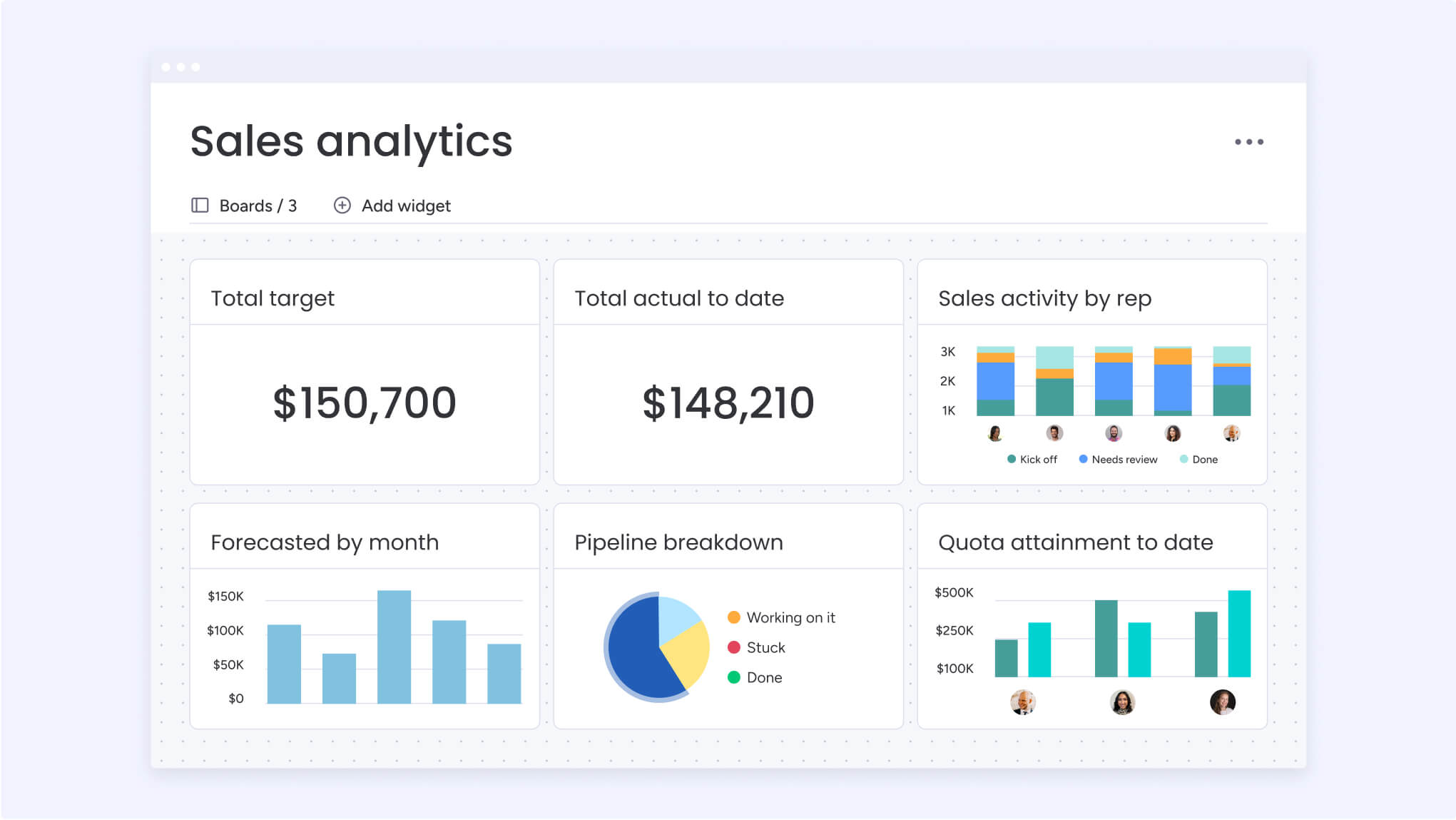
Before putting a plan into place, you need to first determine your business’s specific goals and objectives. Use SMART goals to plan these, such as increasing sales quotas or conversion rates. Once you know your goals, it’s time to choose specific metrics you’ll use as KPIs to track your team’s progress in your SPM plan. Some key metrics you might want to measure include:
- Team or individual quota attainment
- Conversion rate
- Productivity rates
- Deals closed
2. Build a structure and a strategy
The best way to build a strategy is to get the input of different stakeholders in order to determine where your sales team is currently and where the business needs them to be in the near future. From here, you can begin to build out a structure, which can include factors such as the sales rep hiring and onboarding process, pipeline optimization, approaches to employee training, and software or systems to use.
3. Train sales reps to improve their skills
The meat of any sales performance management plan is coaching teams and developing their skills. This involves being transparent about the entire plan, from objectives, KPIs they’ll be measured on, and the overall structure of the SPM plan.
How you train sales reps is entirely subjective. You can have a more senior sales rep mentor newer ones, hire an expert to provide workshops, or create a space for reps to share knowledge and feedback.
4. Keep lines of communication open for feedback
From the get-go, it’s important to get feedback from your sales reps. They might already have suggestions on skills they want to work on, gaps in learning or available resources, or areas where the sales processes can be improved.
But feedback should go both ways. Reps need consistent input on how they’re doing — not just at quarterly reviews, but in regular check-ins, KPI discussions, and coaching conversations. In fact, research from Gallup and Workhuman shows that 46% of employees don’t feel like they’re receiving feedback often enough, which can lead to lower engagement and retention. Creating a culture of open, two-way feedback helps your team stay motivated and aligned.
5. Implement the right software and tools
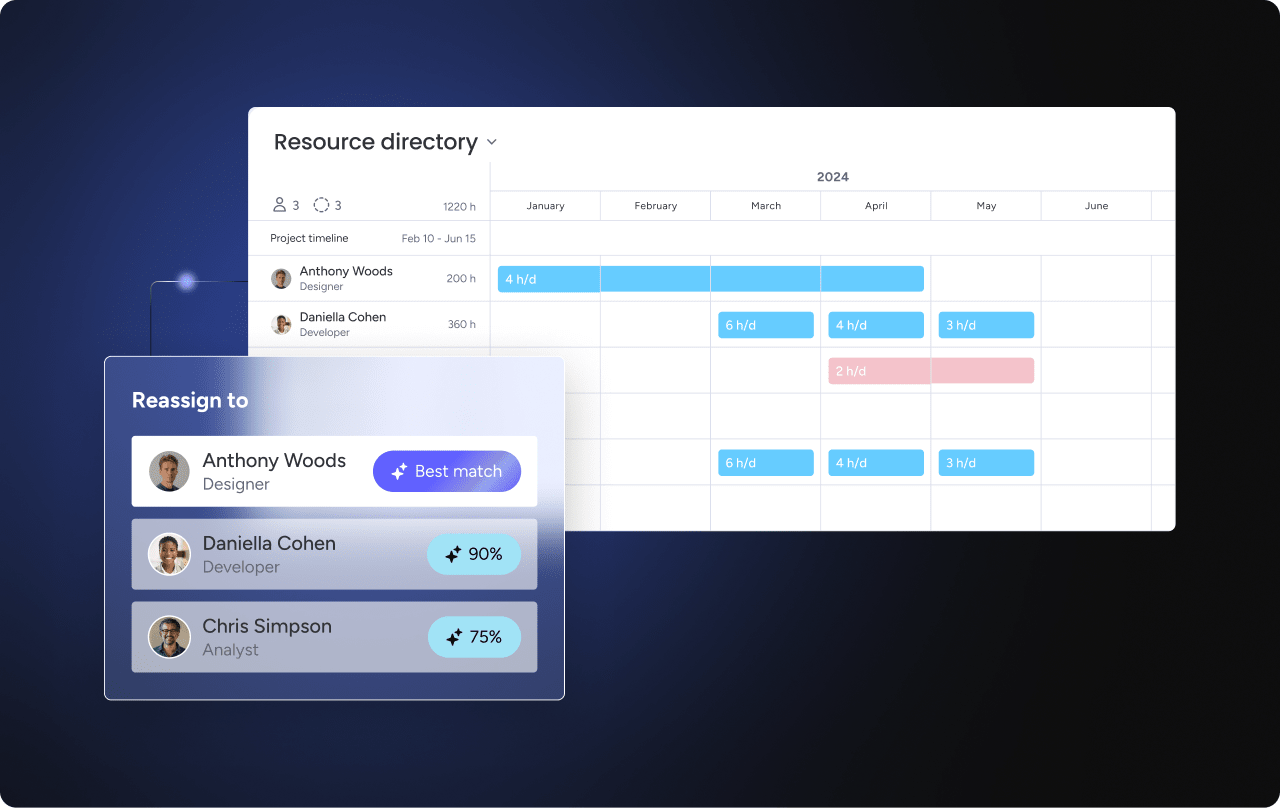
Manual sales performance management is possible — but it’s time-consuming and inefficient. Instead, many teams are turning to AI-powered tools to automate tracking, surface insights, and streamline workflows. According to monday.com’s state of technology 2025 report, 82% of respondents said AI tools are already improving sales performance and team productivity.
With the right software, you can turn raw data into real-time coaching opportunities. Platforms like monday CRM with advanced AI features help sales leaders connect KPIs, forecasts, and performance data in one place — making it easier to spot trends, track progress, and guide reps with personalized, data-backed feedback.
Try monday CRMWhat to look for in sales performance management software
There are many different sales performance management software solutions and tools. Some of them focus on specific areas of SPM, such as incentive management and tracking, while others, like CRMs, encompass a range of features that can help you manage all aspects of performance. When considering which sales performance management solution to turn to, look for one that includes the key features below:
- AI capabilities: SPM software should be equipped with intelligent sales AI features to lighten your workload, whether it’s smart automations, AI-powered reporting, or AI assistant suggestions to improve sales rep performance.
- Workflow automations: Look for a platform that makes it easy to create and customize workflow automations to streamline manual processes and administrative selling tasks like follow-ups and approvals.
- Predictive analytics: Get a look into future sales and predictions with sales forecasting tools to see whether your team is on track to meet goals and quotas, or if you need to shift course and adjust sales plans or incentives.
- Real-time insights: Sales leaders can make data-driven decisions based on real-time reports and dashboards that give you a bird’s eye view of sales activities.
- Territory and lead management: Platforms like CRMs offer lead management tools and automations that make it easy to divide sales territories, segment customers, and attach rules to assign new leads and potential clients to specific sales reps.
- Incentive accounting: Keep progress visible and motivation high with built-in accounting or commission calculation tools that show employees an up-to-date picture of their progress toward quotas, goals, and bonuses.
Manage every aspect of sales performance management with monday CRM
As companies recognize the benefits of using an SPM plan to track performance, the demand for SPM software continues to grow. Software like monday CRM offers automation tools to streamline sales operations and help businesses stay on top of tracking and measuring individual sales reps and team performance.
Using monday CRM, sales managers and team leaders can monitor sales data, track performance, and provide ongoing feedback with a structured SPM plan. It acts as a single source of truth for teams to access data, sales plans, and performance updates. Thanks to built-in AI features, sales teams can also benefit from advanced tools like digital assistants and workflow automation to handle manual tasks so that sales reps can focus on the bigger picture while managers can get direct access to essential data.
Software development company Velv adopted monday CRM to improve fragmented and manual processes. With its current systems, the company had limited visibility into important data, making it harder to determine sales performance. After adopting monday CRM, Velv saw a 60% improvement in sales tracking by keeping data and updates centralized in one platform.
Your organization can also benefit from streamlining data tracking with monday CRM. Here are some core features that will allow you to build a strong SPM plan and execute meaningful change to improve sales team performance.
Keep your team on track with sales forecasting and predictions
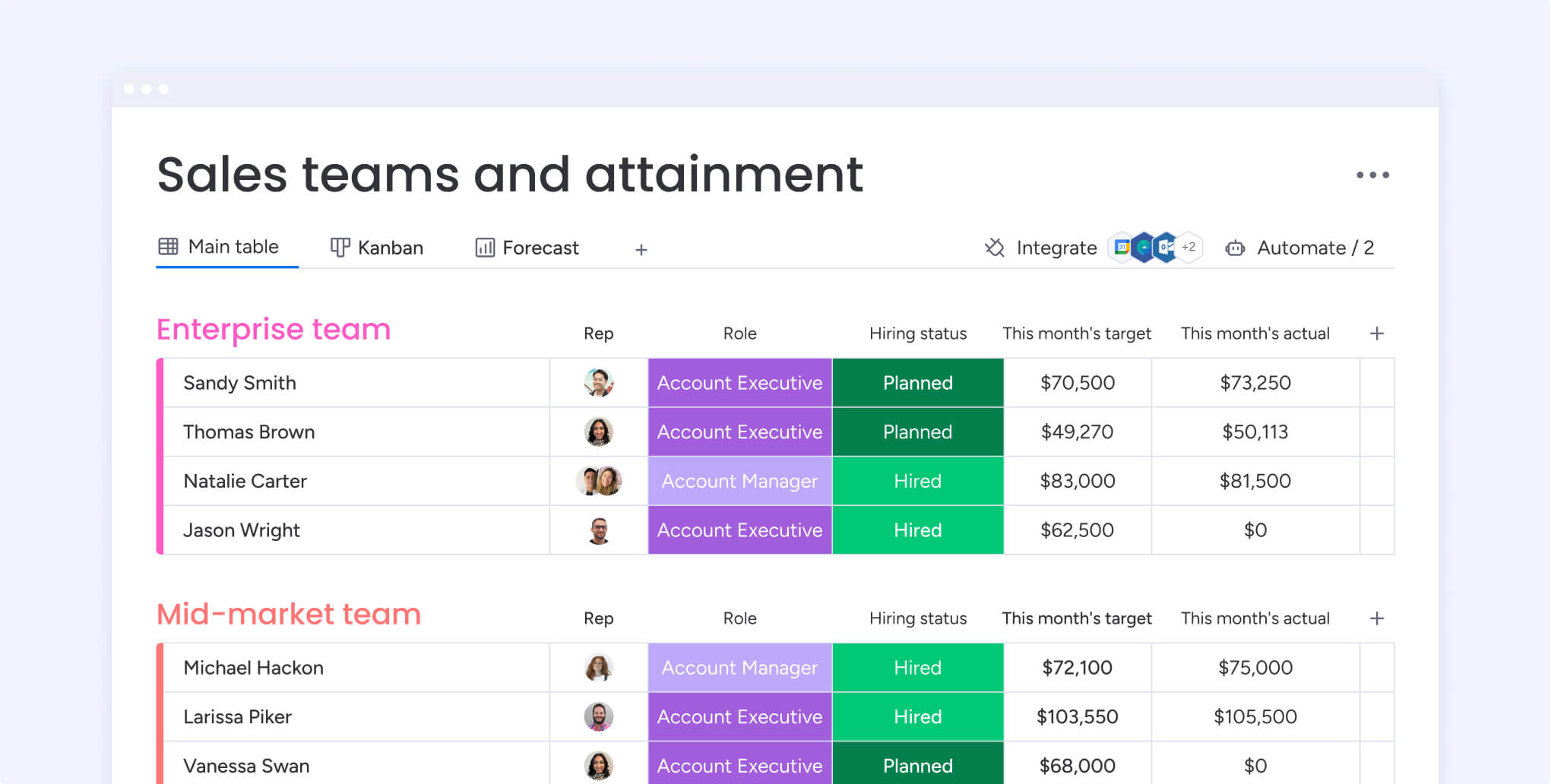
By analyzing historical data, market trends, and customer behavior, monday CRM offers sales predictions and forecasting so that sales leaders can monitor whether their team is likely to meet targets. For instance, if your team is projected to fall short of their Q3 quota, managers can intervene by redistributing leads or offering targeted coaching to help with potentially risky or complex sales.
Advanced analytics and reporting tools to manage performance
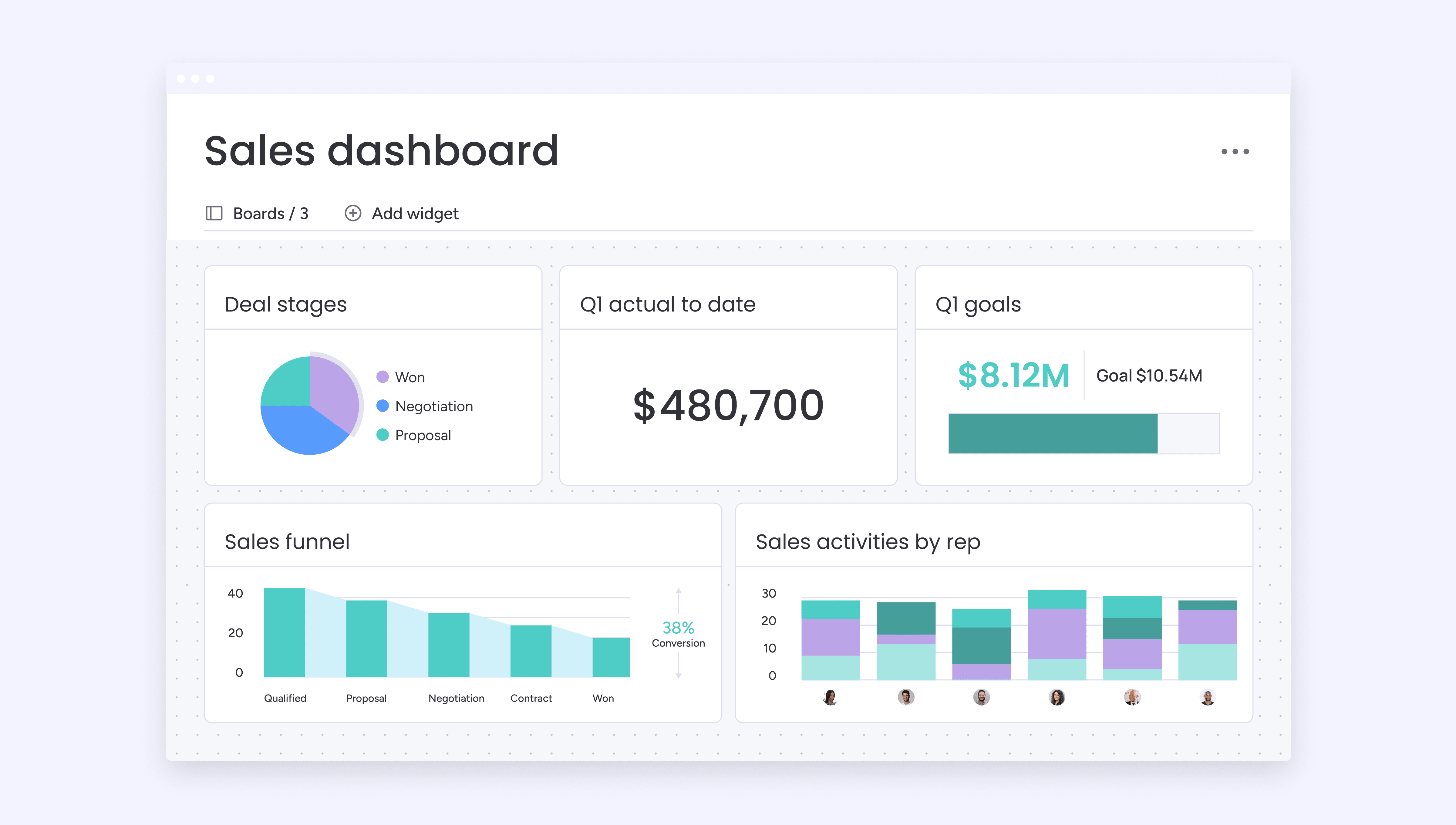
Aside from real-time reports, monday CRM gives you insights across all aspects of your sales accounts, including AI to let you know when specific deals are at risk and smart suggestions to get them back on the right path. You can also view dashboards to monitor performance analytics at a glance, making it easier to view areas that need more attention.
AI-enabled automations to keep workflows flowing
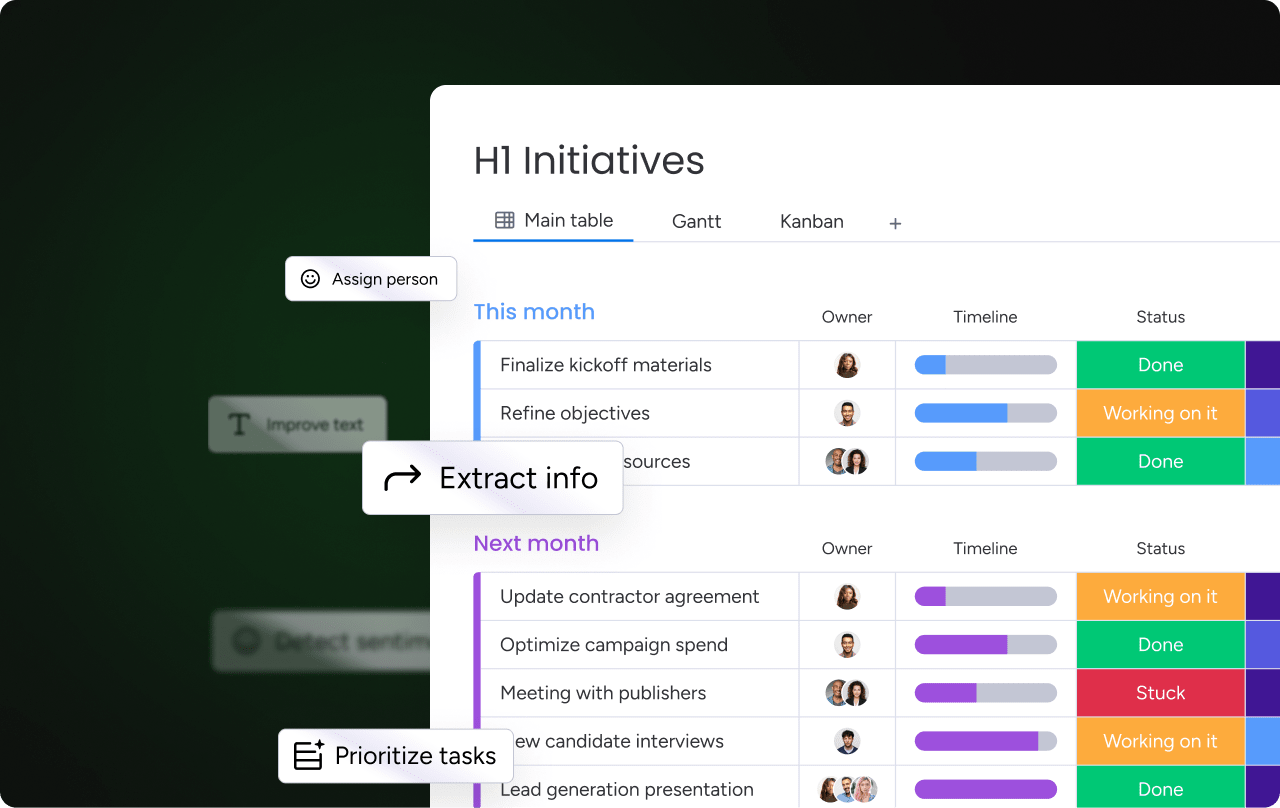
In monday CRM, you’ll find helpful AI blocks with customizable, ready-to-go automations that don’t require any coding. Add advanced capabilities to any workflow, including categorization to organize data, sentiment analysis, data extraction from files and documents, auto summarization of calls and meetings, and more. With monday CRM AI automations, managers can make sure their sales team is focused on nurturing and engaging leads and provide more tailored sales coaching rather than training them on how to complete essential administrative tasks.
Create your ideal sales performance management process
A sales performance management plan is essential to developing your sales team’s skills and turning them into sales leaders. However, an SPM plan is only as good as the tools it relies on to deliver feedback and track progress. That’s why turning to software like monday CRM to manage and oversee your SPM plan is one of the key ways to ensure your plan, and therefore your sales team, succeeds.
Try monday CRMFAQs
What does SPM mean in sales?
SPM stands for sales performance management and refers to the process and tools used to monitor, guide, and enhance the effectiveness of a sales team through performance tracking, coaching, goal setting, and incentive management.
How do you measure sales manager performance?
One method is to track the sales team performance under the manager’s supervision. You can also measure turnover rate in a manager’s team, time spent coaching, or get employee testimonials.
How can you manage top sales performers?
This depends on different factors, but some tips include setting clear expectations, providing adequate resources and support, offering regular feedback, and implementing incentive programs to motivate and reward top performers.
What is SPM software?
SPM software allows businesses to manage and improve sales performance through tools and data that can help track sales performance, identify areas of improvement, and develop strategies to improve sales outcomes.
What are the stages of performance management?
The key stages include sales and goal planning, setting sales incentives, performance and data monitoring, and coaching and development. These stages help ensure continuous improvement and alignment with organizational sales objectives.
 Get started
Get started 
